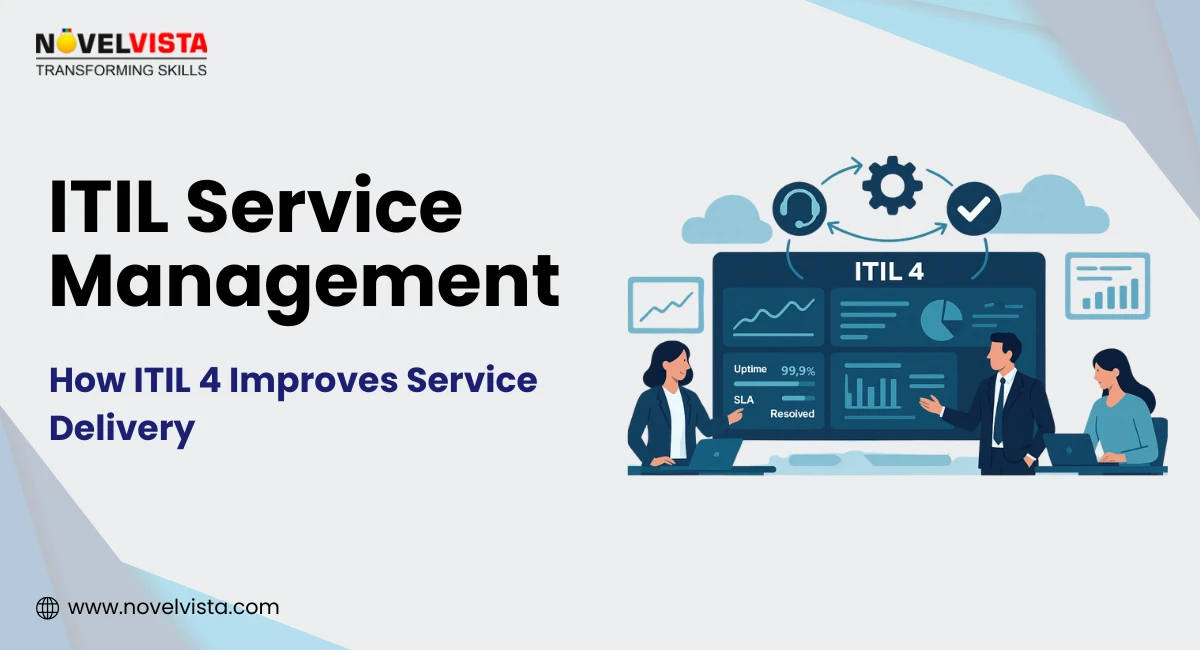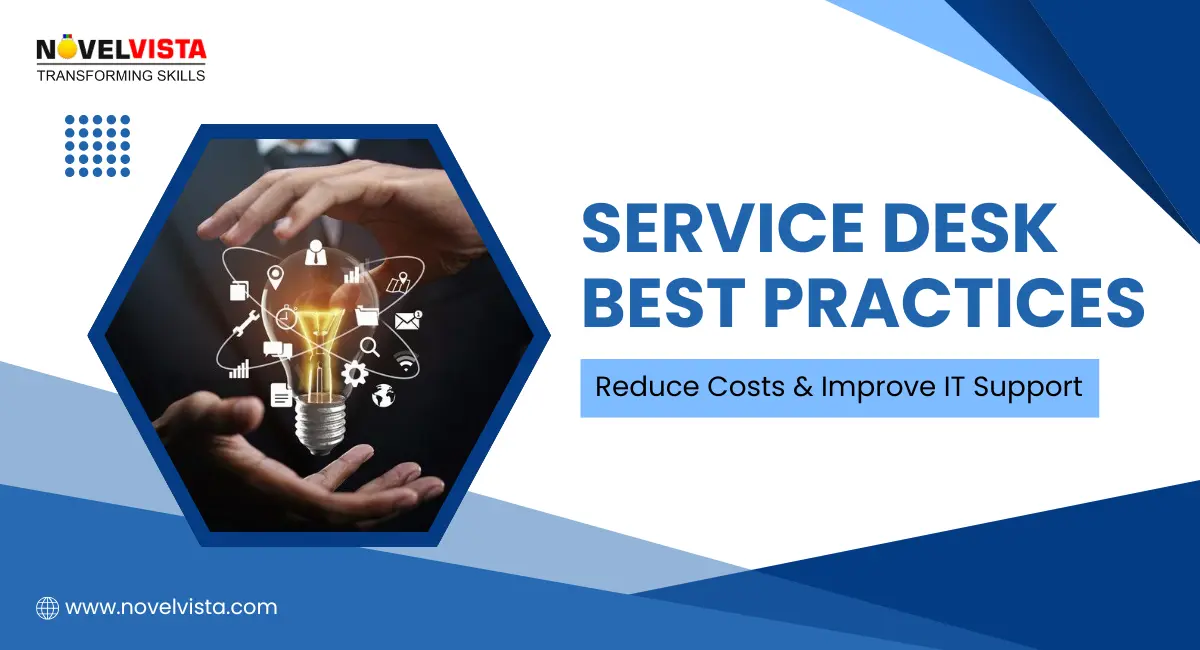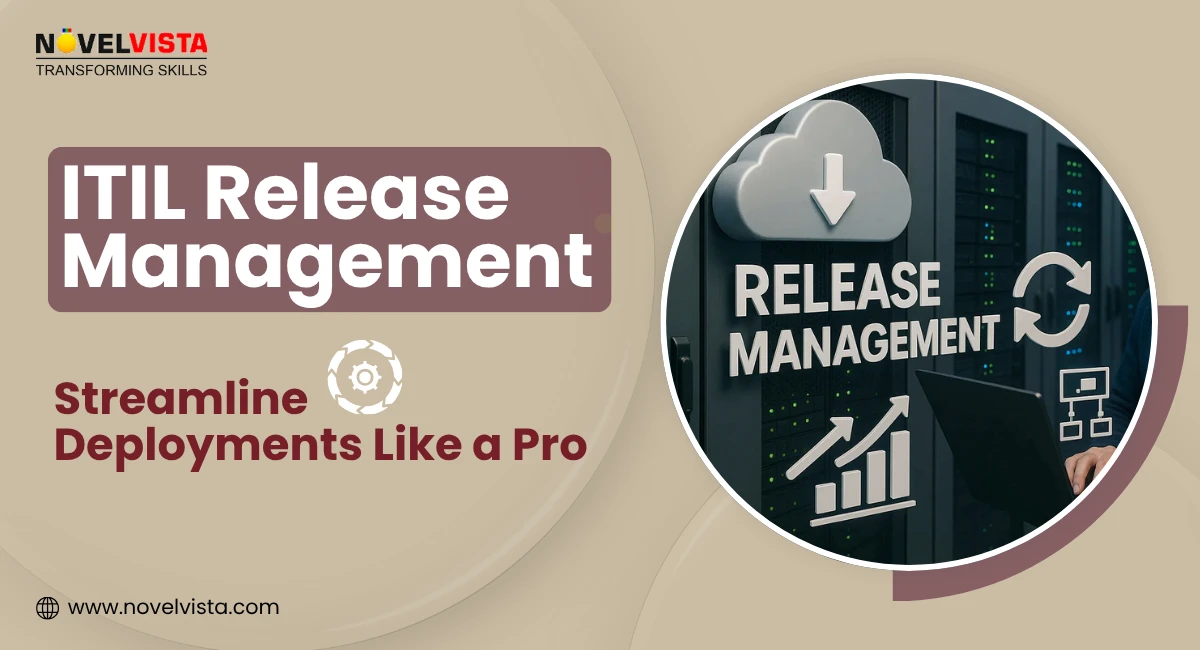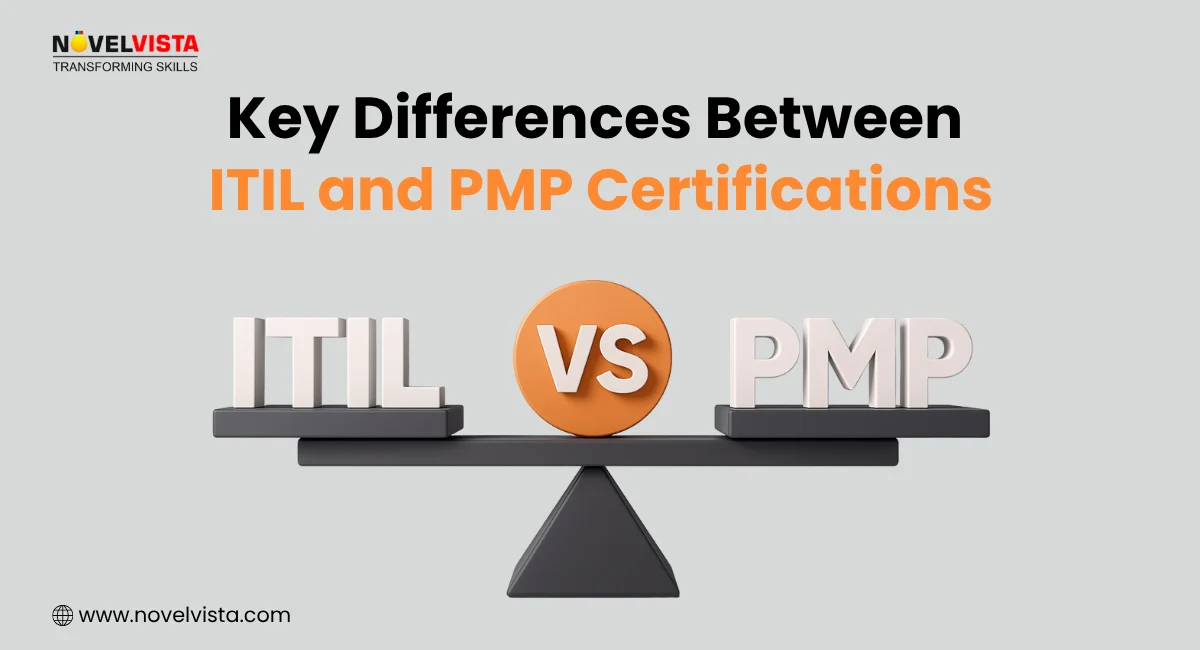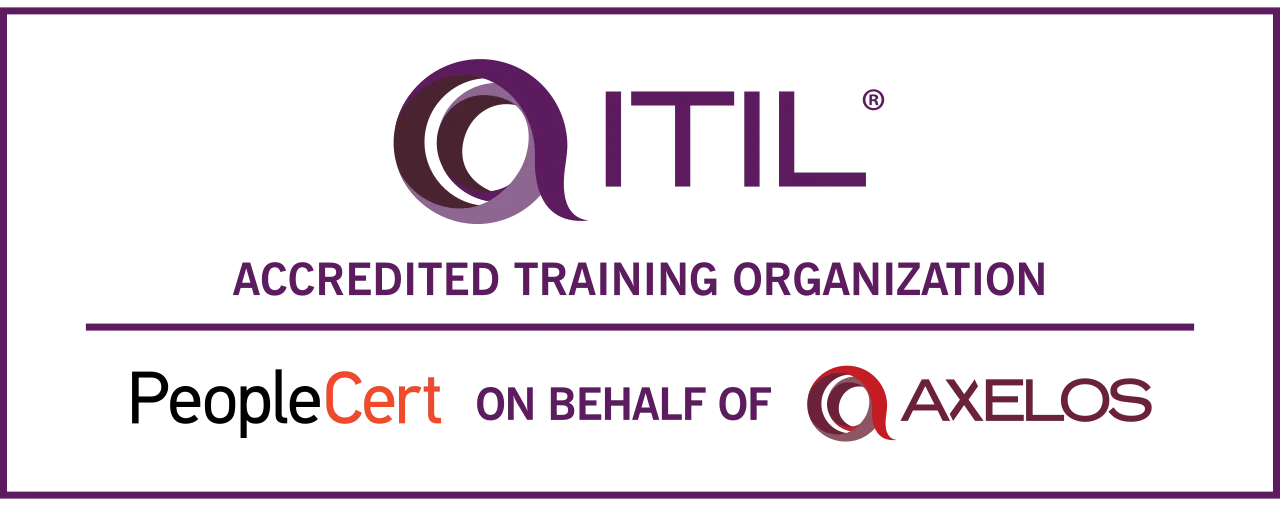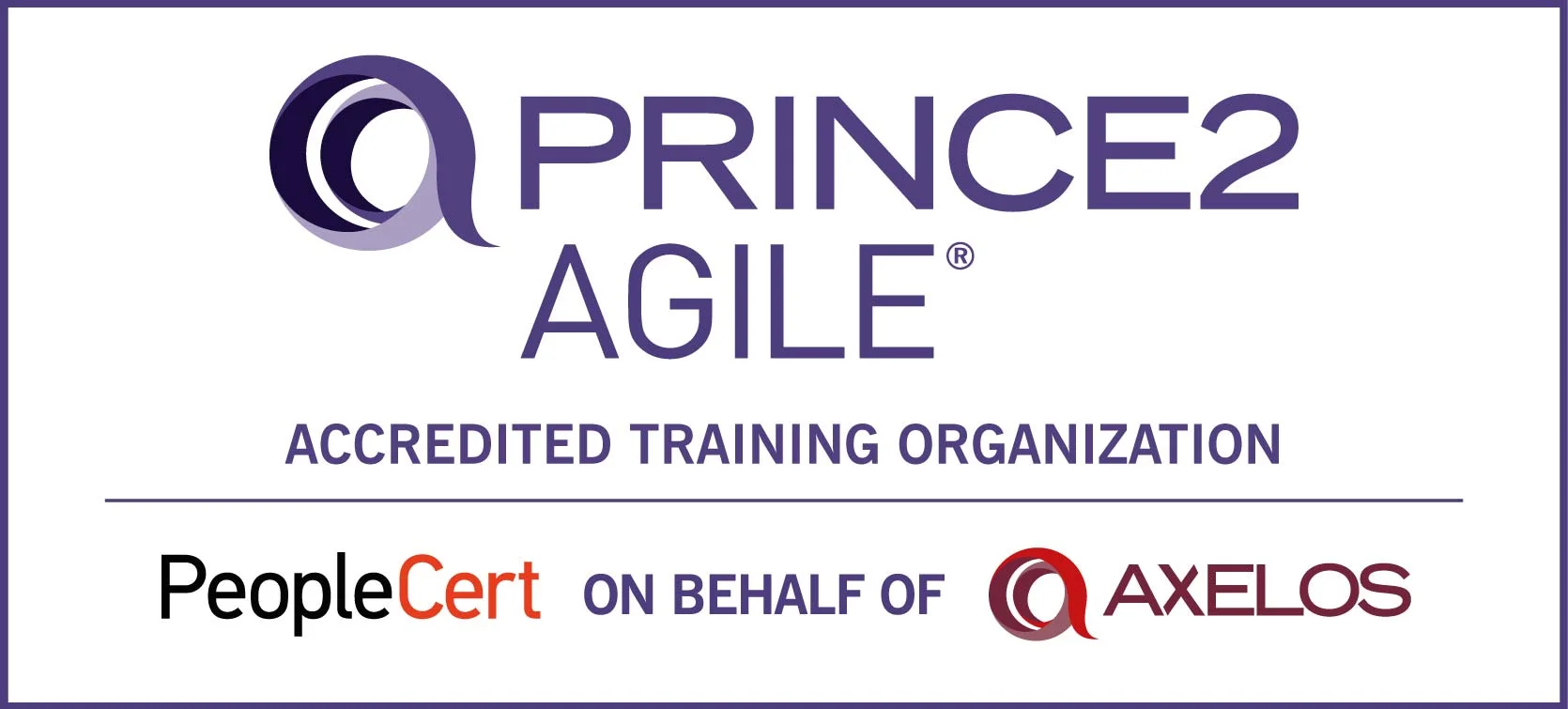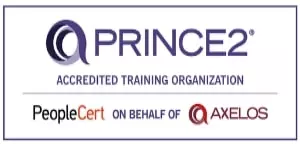- What is ITIL 4?
- Key Features of ITIL 4 in Service Management
- Key Aspects of ITIL Service Management
- How ITIL 4 Enhances Service Management
- Real-World Benefits of Adopting ITIL 4
- Challenges in Transitioning to ITIL 4
- ITIL 4 Certification: Boosting Your Career in Service Management
- Conclusion: ITIL 4 – The Future of Service Management
- Next Step: Take Your ITSM Expertise to the Next Level
ITIL Service Management is the backbone of efficient IT operations, especially as businesses adapt to rapid digital transformation. In 2025, with more enterprises turning to technology to streamline their processes and enhance customer experiences, effective service management has never been more critical. ITIL 4, the latest version of the globally recognized framework, provides the tools, practices, and methodologies needed to manage and optimize IT services, ensuring they align with business goals and user needs.
As organizations face increasingly complex IT landscapes, ITIL Service Management offers the agility, efficiency, and customer-centric approach that modern businesses need. In this post, we’ll dive into how ITIL 4 improves service management, why it’s essential, and how adopting ITIL 4 can lead to better outcomes for your organization.
What is ITIL 4?
ITIL 4 is the latest evolution of the ITIL Service Management Framework, designed to support businesses in managing their IT services more effectively. ITIL 4 builds on its predecessors by integrating modern practices like Agile, DevOps, and Lean to better meet the needs of today’s digital-first world.
ITIL 4 is recognized by leading organizations worldwide, including Fortune 500 companies and government agencies, as the gold standard for IT service management. Its widespread adoption across industries demonstrates its authority as a framework that not only sets benchmarks but also continuously evolves with modern practices like Agile, DevOps, and Lean.
Want to learn more about ITIL 4? Explore our detailed blog on What ITIL 4 is all about and boost your career.
Key Features of ITIL 4 in Service Management
1. Service Value System (SVS): The heart of ITIL 4, the Service Value System (SVS), ensures that all activities within the IT service management lifecycle are aligned with business goals. The SVS integrates various ITIL components into a unified approach, enabling organizations to continuously deliver value to customers and stakeholders.
2. Guiding Principles: ITIL 4 provides 7 guiding principles, such as "Focus on Value," "Start Where You Are," and "Progress Iteratively." These principles offer practical advice on creating value-driven IT services and prioritizing outcomes over outputs.
3. Practices Over Processes: ITIL 4 shifts the focus from rigid processes to flexible practices that can be adapted to meet specific business needs. This change allows businesses to be more agile and better respond to changes in their environment.
4. Integration with Agile, DevOps, and Lean: One of the most significant changes in ITIL 4 is its integration with Agile, DevOps, and Lean methodologies. This provides businesses with the flexibility to adopt best practices across different IT operations and helps in delivering services faster and more efficiently.
Key Aspects of ITIL Service Management
- Value Creation: At its core, ITIL emphasizes delivering value to both the business and its customers, focusing on outcomes rather than just completing tasks.
- Alignment with Business Goals: ITIL ensures that IT services are strategically aligned with the organization’s objectives, directly contributing to its success.
- Best Practice Framework: ITIL offers a set of globally recognized guidelines, derived from real-world experiences across industries, to streamline IT service management.
- Holistic Approach: By integrating people, processes, and technology, ITIL creates a comprehensive, all-encompassing framework for managing services effectively.
- Service Lifecycle Management: ITIL outlines a structured framework for managing IT services through their entire lifecycle, including Service Strategy, Service Design, Service Transition, Service Operation, and Continual Service Improvement.
How ITIL 4 Enhances Service Management
ITIL Service Management is no longer just about keeping systems running; it’s about delivering value. ITIL 4 enhances IT Service Management by focusing on several key areas:
- Improved Value Delivery: ITIL 4 shifts the focus to delivering outcomes, not just completing tasks. This results in services that are more closely aligned with customer expectations and business objectives.
- Stronger Business-IT Alignment: ITIL Service Management creates a bridge between business objectives and IT operations. It helps IT teams understand the impact of their work on business outcomes, fostering a more collaborative environment between IT and business units.
- Enhanced Collaboration & Communication: ITIL 4 encourages communication and collaboration between different teams, creating a more agile and transparent work environment. This is essential for organizations that are managing complex, fast-moving IT systems.
- Agility & Adaptability: ITIL 4 supports organizations in adapting to rapid changes by embedding flexibility within the service management framework. This is vital for industries where quick pivots are needed, such as tech, finance, and healthcare.
- Customer-Centric Approach: At the core of ITIL IT Service Management is a customer-first mindset. ITIL 4 prioritizes user experience and satisfaction, ensuring that services are designed with the end-user in mind, delivering what they need when they need it.
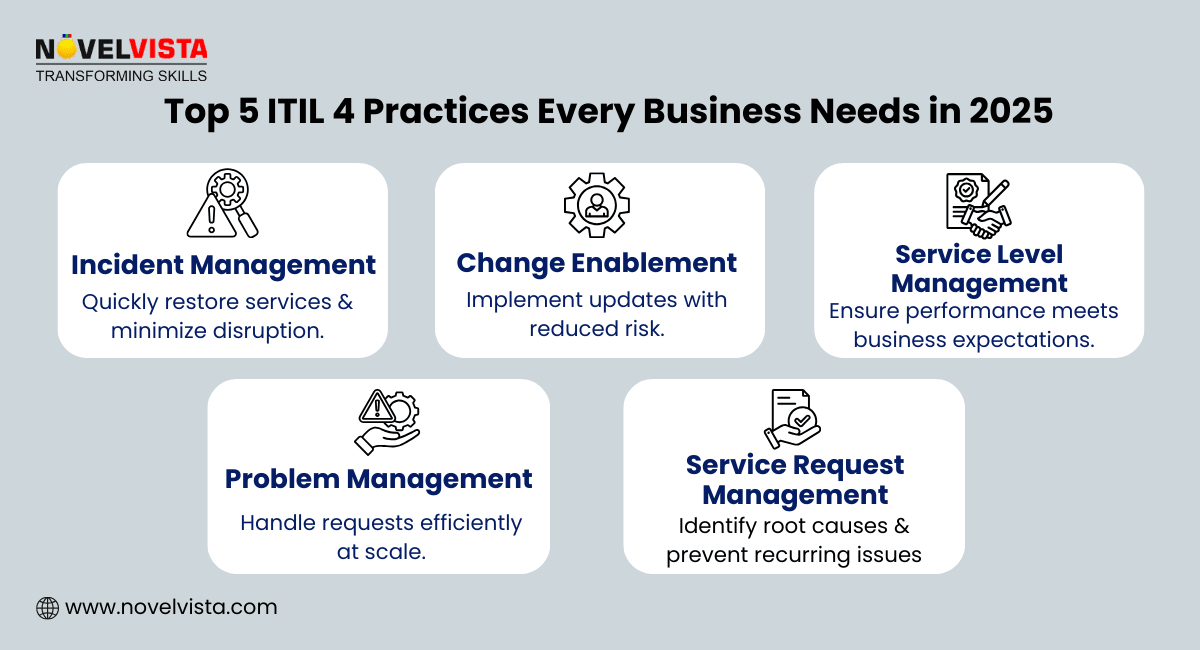
Real-World Benefits of Adopting ITIL 4
When ITIL 4 is implemented correctly, businesses experience several benefits:
- Reduced Downtime & Improved Service Availability: With a focus on proactive problem-solving and continuous improvement, ITIL 4 ensures IT services are reliable and available when needed, reducing downtime and boosting productivity.
- Faster Incident Resolution & Better Problem Management: By using a structured incident management approach, ITIL 4 helps teams respond more efficiently to disruptions, minimizing downtime and improving service delivery.
- Increased Customer Satisfaction & Trust: ITIL 4 enhances customer satisfaction by ensuring that IT services are aligned with customer needs and expectations. Timely service resolution, quality delivery, and a clear understanding of business goals all contribute to a better customer experience.
- Case Examples:
- Healthcare: Hospitals using ITIL Service Management Processes to ensure quick recovery from system failures and uninterrupted patient care.
- Finance: Banks leveraging ITIL Service Management Framework to align IT systems with strict regulatory compliance and customer service standards.
- IT Companies: IT service providers using ITIL 4 to drive innovation in their services and improve customer experience.
- Healthcare: Hospitals using ITIL Service Management Processes to ensure quick recovery from system failures and uninterrupted patient care.
Download: ITIL 4 Practices Cheat Sheet for Service Managers
Get a quick-reference guide to ITIL 4 practices. Simplify service management, improve efficiency, and boost exam and career readiness.
Challenges in Transitioning to ITIL 4
Switching to ITIL 4 can come with challenges, including:
- Resistance to Change: IT teams may resist adopting new practices. To overcome this, create a comprehensive change management plan, communicate the benefits clearly, and involve employees in the process.
- Training Needs: ITIL 4 requires upskilling teams on the new principles and practices. Providing ongoing training is essential to ensure successful adoption.
- Cultural Shift: Transitioning to a service-oriented mindset can be a significant cultural shift. Encourage leadership to champion ITIL 4 and lead by example to foster a culture of service excellence.
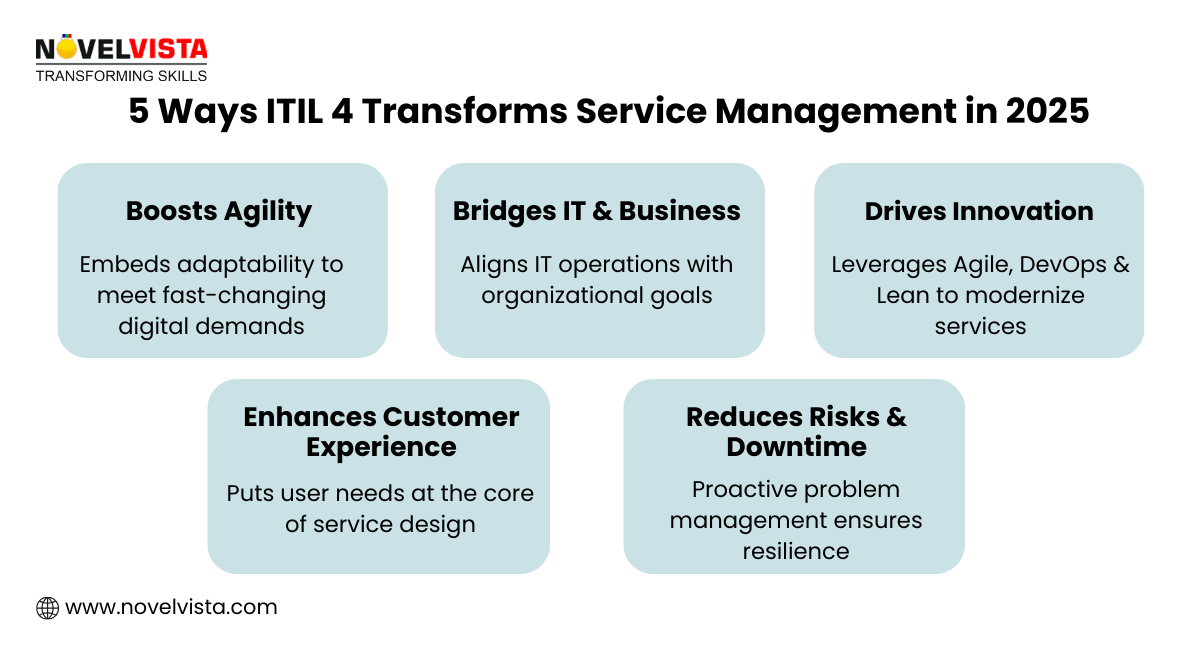
ITIL 4 Certification: Boosting Your Career in Service Management
What is ITIL Service Management in terms of career development? Adopting ITIL 4 can open doors for IT professionals. ITIL certifications, particularly the ITIL 4 Foundation Certification, are highly regarded in the IT industry and can boost career opportunities. Whether you’re looking to become a Service Manager, Incident Manager, or Problem Manager, ITIL 4 offers a structured learning path for career growth.
For professionals who want to become experts in ITIL 4, pursuing ITIL 4 Managing Professional or Strategic Leader certifications can further enhance credibility and expertise in ITIL IT Service Management.
Conclusion: ITIL 4 – The Future of Service Management
ITIL 4 is revolutionizing IT Service Management by making it more agile, collaborative, and customer-centric. By embracing ITIL 4, organizations can enhance service delivery, reduce downtime, and improve customer satisfaction. With its focus on value delivery and adaptability, ITIL 4 is the go-to framework for organizations looking to thrive in today’s digital economy.
Next Step: Take Your ITSM Expertise to the Next Level
Ready to dive deeper into ITIL Service Management? With NovelVista’s ITIL 4 Foundation Certification, you’ll gain practical skills, insights, and the knowledge to implement ITIL 4 effectively. Whether you’re starting your ITSM journey or advancing your career, our certification program can help you stay ahead of the competition. Enroll today and become the IT service management professional your organization needs!
Frequently Asked Questions
Author Details

Mr.Vikas Sharma
Principal Consultant
I am an Accredited ITIL, ITIL 4, ITIL 4 DITS, ITIL® 4 Strategic Leader, Certified SAFe Practice Consultant , SIAM Professional, PRINCE2 AGILE, Six Sigma Black Belt Trainer with more than 20 years of Industry experience. Working as SIAM consultant managing end-to-end accountability for the performance and delivery of IT services to the users and coordinating delivery, integration, and interoperability across multiple services and suppliers. Trained more than 10000+ participants under various ITSM, Agile & Project Management frameworks like ITIL, SAFe, SIAM, VeriSM, and PRINCE2, Scrum, DevOps, Cloud, etc.
Course Related To This blog
ITIL4 Specialist Monitor Support and Fulfil Certification
ITIL 4 Specialist Sustainability in Digital & IT
ITIL® 4 Strategic Leader Digital And IT Strategy (DITS)
ITIL® 4 Specialist Drive Stakeholder Value
ITIL® 4 Specialist High Velocity IT
ITIL® 4 Strategist Direct, Plan & Improve
ITIL® 4 Specialist Create Deliver & Support
ITIL® 4 Foundation Certification
Confused About Certification?
Get Free Consultation Call

